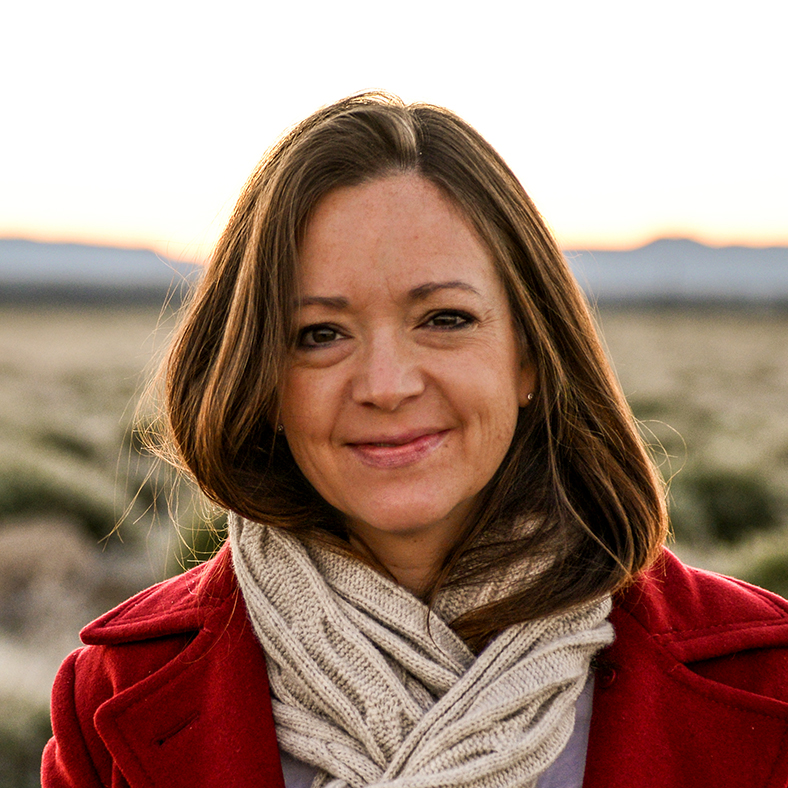

Jenny Koebernick
Associate Professor (Cotton & Soybean Breeding)
Crop, Soil & Environmental Sciences
(334) 844-3801
jenny.koebernick@auburn.edu
Get In Touch
Address:
256 Funchess Hall
Auburn Univ, AL 36849
Biography
EDUCATION
- Ph.D. in Agronomy, Texas A&M (2010)
- M.S. in Crop Physiology, University of Tennessee (2006)
- B.S. in Biology, University of Tennessee (2002)
PROFESSIONAL EXPERIENCE
- Assistant Professor, Cotton and Soybean Breeder, Auburn University (2016-present)
- Postdoctoral Fellow, CSIRO, Narrabri, Australia, Cotton Breeder (2010-2016)
PROFESSIONAL AFFILIATIONS
- Crop Science Society of America (CSSA)
- Agronomy Society of America (ASA)
- National Association of Plant Breeders (NAPB)
- Association of Australian Cotton Scientists (AACS)
- International Cotton Researchers Association (ICRA)
Research
- Disease resistance breeding in cotton and soybean
- Cultivar by management strategies for improving yield potential
Courses
- CSES 5030/6030 — Advanced Crop Science
- CSES 5100/6100 — Plant Genetics and Crop Improvement
Publications
SELECT OR RECENT PUBLICATIONS
- Singh, J., A. Gamble, S. Brown, B. Campbell, J. Jenkins, J. Koebernick, P. Bartley, and A. Sanz-Saez. 2023. Exploring 65 Years of Progress in Cotton Nutrient Uptake, Efficiency and Partitioning in the USA. Field Crops Research. Accepted.
- Patel, S.J., J. Koebernick, K. Bowen, and J. Patel. 2023. Deciphering the Genetic Architecture of Resistance to Corynespora cassiicola in Soybean (Glycine max L.) by Integrating Genome-Wide Association Mapping and RNA-Seq Analysis. Frontiers in Plant Science. 14. https://doi.org/10.3389/fpls.2023.1255763
- Bourland, F., J. Koebernick, and D. Jones. 2023. Registration of Arkot 1202, Arkot 1207, Arkot 1208 and Arkot 1214 Cotton Germplasm. J. of Plant Registration. Accepted.
- Singh, J., A.V. Gamble, S. Brown, B.T. Campbell, J. Jenkins, J. Koebernick, P. C. Bartley, and A. Sanz-Saez. 2023. 65 Years of Cotton Lint Yield Progress in the USA: Uncovering Key Influential Yield Components. Field Crops Research.302:109058. https://doi.org/10.1016/j.fcr.2023.109058
- Patel, S., J. Patel, K. Silliman, N. Hall, K. Bowen, and J. Koebernick. 2023. Comparative transcriptome profiling unfolds a complex defense and secondary metabolite networks imparting Corynespora cassiicola resistance in soybean (Glycine max (L.) Merrill). International Journal of Molecular Sciences. 24 (13) 10563 https://doi.org/10.3390/ijms241310563
- Shrestha, B., B. Ward, T. Allen, E. Da Silva, H. Zulli, W. Dunford, V. Doyle, C. Bradley, B. Buckley, P. Chen, M. Clubb, H. Kelly, J. Koebernick, G. Padgett, J. Rupe, E. Sikora, T. Spurlock, S. Thomas-Sharma, A. Tolbert, X. Zhou, and P. Price. 2023. Characterization of QoI-fungicide resistance in Cercospora isolates associated with Cercospora leaf blight of soybean from the southern United States. Plant Disease. DOI: 10.1094/PDIS-03-23-0588-RE
- Heilsnis, B., J. Mahas, K. Conner, S. Pandey, W. Clark, J. Koebernick, R. Srinivasan, K. Martin, and A. Jacobson. 2023. Characterizing the vector competence of Aphis gossypii, Myzus persicae and Aphis craccivora (Hemiptera: Aphididae) to transmit cotton leafroll dwarf virus to cotton in the United States. Journal of Economic Entomology. https://doi.org/10.1093/jee/toad080
- McDonald, S., Bilyeu, K., Koebernick, J., Buckley, B., Fallen, B., Mian, R., Li, Z. 2023. Selecting recombinants to stack high protein with high oleic acid and low linolenic acid in soybean (Glycine Max). Plant Breeding. https://doi.org/10.1111/pbr.13102
- Banerjee, N., M. Khan, M. Swapna, S. Yadav, G. Tiwari, S. Jena, J. Patel, R. Manaimekalai, S. Kumar, S. Dattamajuder, R. Kapur, J. Koebernick and R. Singh. 2023. QTL mapping and identification of candidate genes linked to red rot resistance in sugarcane. 3 Biotech. DOI: 10.1007/s13205-023-03481-7
- Thompson, S., J. Koebernick, L. Silva, M. Mullenix, C. Heaton, R. Carrell, and S. Dillard. 2023. Forage mass and nutritive value of grain- and forage-type soybean cultivars managed under different row spacings and clipping heights. Agronomy. 13(2):487 https://doi.org/10.3390/agronomy1302048
- Fett, R., Gillen, A., Read, Q., Patel, S., and Koebernick, J. 2023. Agrosystems, Geosciences, and Environment. https://doi.org/10.1002/agg2.20354
- Heilsnis, B., Laughlin, A., Conner, K., Koebernick, J., and Jacobson, A. 2022. Vector Competency of Aphis gossypii and Bemisia tabaci to Transmit Cotton Leafroll Dwarf Virus. Journal of Cotton Sci. 26:23-30.
- J.L. Jacobs, M.K. Mullenix, J.C. Koebernick, S.L. Dillard, S.M. Justice, D.A. Tigue, S.P. Rodning, R.B. Muntifering. 2022. Cotton gin byproduct: Effects on feed intake, quality, and safety for use in diets of gestating beef cows. Applied Animal Science. 38:402-408.
- Jacobs, J. L., Mullenix, K., Koebernick, J.C., Dillard, L., Munterfering, R.B., Justice, S.M., and Tigue, D.A., 2022. Cotton seed characteristics as it relates to beef cattle consumption: Protein degradability, digestibility, and gossypol content. Applied Animal Science. 38:409-416.
- Patel, S., Koebernick, J., Bowen, K., and Patel, J. 2022. Evaluating soybean lines for Corynespora cassiicola resistance under greenhouse condition. Crop Protection. 159. https://doi.org/10.1016/j.cropro.2022.106018
- Conner, K., Sikora, E., Koebernick, J. and Zaccaron, M. 2022. Interdisciplinary team address Cotton Leafroll Virus in the United States. Journal of Extension. 60(2) Article 9
- Heilsnis, B.*, Koebernick, J.C., Jacobson, A. and Conner, K. 2021. A guide to grafting for cotton (Gossypium hirsutum L.) virus transmission and the successful transmission of Cotton Leaf Roll Dwarf Virus. Journal of Cotton Science. Journal of Cotton Sci. 25:222-228.
- McLaughlin, A., Heilsnis, B., Koebernick, J., Conner, K., and Jacobson, A. 2022. First Report of Tomato yellow leaf curl virus infecting Upland Cotton (Gossypium hirsutum L.) in Alabama, USA. Plant Disease. 10.1094/PDIS-09-20-2041-PDN
- Brown, S.M., Barber, D., and Koebernick, J. 2021.Effects of Handling of Cotton Seed on Stand Establishment and Productivity. Crop, Forage, & Turfgrass Management. 2021;e20125. https://doi.org/10.1002/cft2.20125
- Moore, C., Sharma, N., Koebernick, J., and Bowen, K. 2020. Establishing a greenhouse protocol for evaluating resistance to Corynespora cassiicola in cotton. Plant Disease. Published Online:24 Mar 2021. https://doi.org/10.1094/PDIS-08-20-1675-RE
- Koebernick, J.C., Ahl, J., and Weaver, D. 2020. Merging of plant breeding and pathology: A history of cotton breeding at Auburn. J. of Cotton Science. 24:175-182.
- Patel, J., Lubbers, E., Chee, P. and J.C. Koebernick. 2020. Genetics and Genomics of Cottonseed Oil In: Tombuloglu, H., Unver, T., Tombuloglu, G., Hakeem, K. (eds) Oil Crop Genomics. Springer, New York, NY.
- Thiessen, L., Schappe, T., Zaccaron, M., Conner, K., Koebernick, J. and Jacobson, A. 2020. First Report of Cotton Leafroll Dwarf Virus Affecting Cotton in North Carolina. Plant Disease. 104:12, 3275.
- Koebernick, J.C., Kaplan, G., Lawrence, K., Brown, S. and Sikkens, R. 2020. Response to nematicide by cotton genotypes varying in reniform nematode resistance. Crop Sci. 61:2,929-935.
- Liu, S.M., Koebernick, J.C., Walford, S., Constable, G.A., and Stiller W.N. 2020. Improved lint yield under field conditions in cotton over-expressing transcription factors regulating fibre initiation. Transgenic Research. 29:529-550.
- Koebernick, J.C., Liu, S.M., Constable, G.A., Stiller, W.N. 2019. Parental selection strategy for improving fibre strength and maintaining lint yield in cotton. Industrial Crops and Products. 129:585-593.
